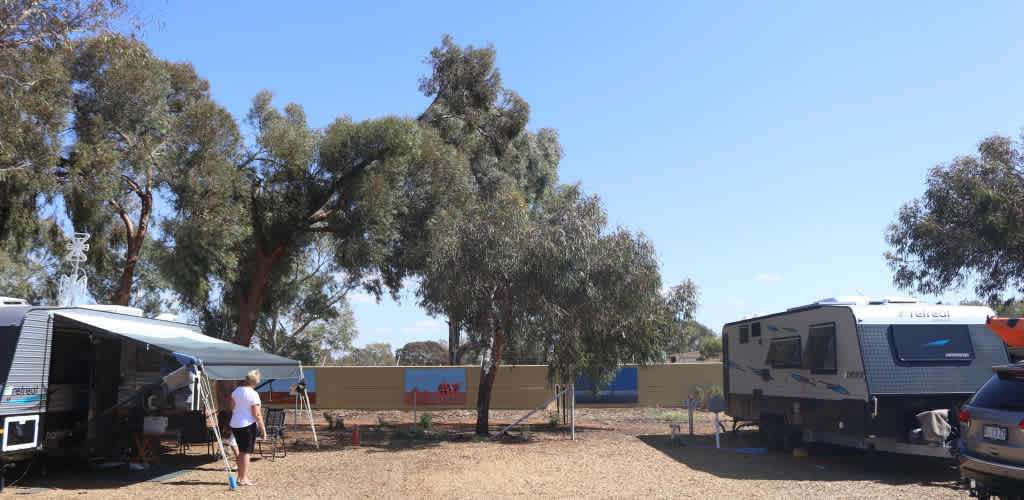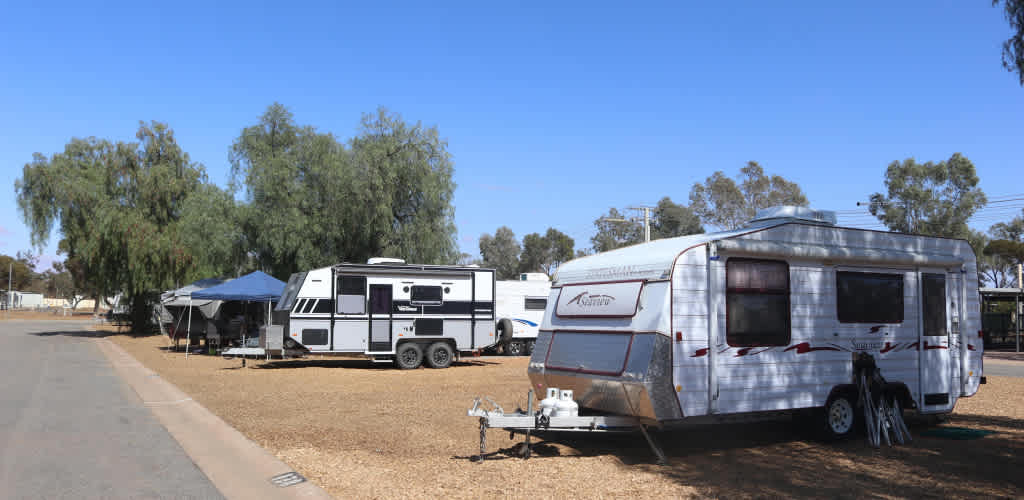Desert camping near Broken Hill
You don’t need 4-wheel drive to explore the Outback around Broken Hill.
- Broken Hill
Popular camping styles for Broken Hill


Desert camping near Broken Hill guide
Overview
The far northwestern corner of New South Wales is a great introduction to the Outback, where mobs of emus roam the plains and endless red dust plains studded with salt bush seem to stretch on forever under cloudless skies. Nicknamed the Silver City, Broken Hill made its fortune on the wealth of buried silver and zinc that was first discovered in the 1880s, and while there’s plenty of mining heritage in and around the city, it’s most famous these days for its arts scene and access to the great outdoors with camping and glamping options.
Where to go
Silverton
Who needs Hollywood when you can visit Silverton? If this mining ghost town 25 kilometres northwest of Broken Hill looks vaguely familiar, it’s because you’ve probably seen it before—it’s one of the most popular movie locations in the country. Dozens of movies have been shot here, including Mad Max II, Razorback, A Town Like Alice, Dirty Deeds, and The Craic. On average, a commercial is shot here every five weeks.
Menindee
About 110 km east of Broken Hill, Menindee is—during not-so-dry times—a veritable desert oasis, where the Darling River flows into the Menindee Lakes. Nearby Kinchega National Park offers great riverside camping and much of it was originally Kinchega Station, so you can visit the original 1875 woolshed.
Mutawintji
In contrast to Kinchega’s plains and lakes, Mutawintji National Park is spectacular gorge country. Some 130 km northwest of Broken Hill along the unsealed road to Tibooburra, the area is home to one of the best collections of Aboriginal art in NSW thanks to the Malyankapa and Pandjikali people. The Mutawintji Local Land Council conducts tours where campers can see Aboriginal rock art dating back more than 8,000 years.
When to go
Summer in the Outback can be unpleasant—it’s extremely hot, and flies are both plentiful and annoying. Travelling in remote areas during summer can also be dangerous if your vehicle breaks down. The best time to visit Broken Hill and camp in the surrounding area is in the cooler months, when days are mild but nights are quite cold.
Know before you go
- Broken Hill is a 13-hour drive northwest of Sydney and about a 6-hour drive from Adelaide. Although in NSW, the town operates on South Australian time (Australian Central Standard Time), which is 30 minutes behind the rest of NSW.
- Many roads in the area are unsealed. After rain, they can take up to 24 hours to dry out, sometimes even weeks. Closed road signage should be obeyed, even in 4-wheel drive vehicles, for both safety and to avoid fines.
- Ensure you are carrying enough water, basic spare parts, food, and fuel. In remote areas, fuel outlets are rarely open after hours or on weekends.
















